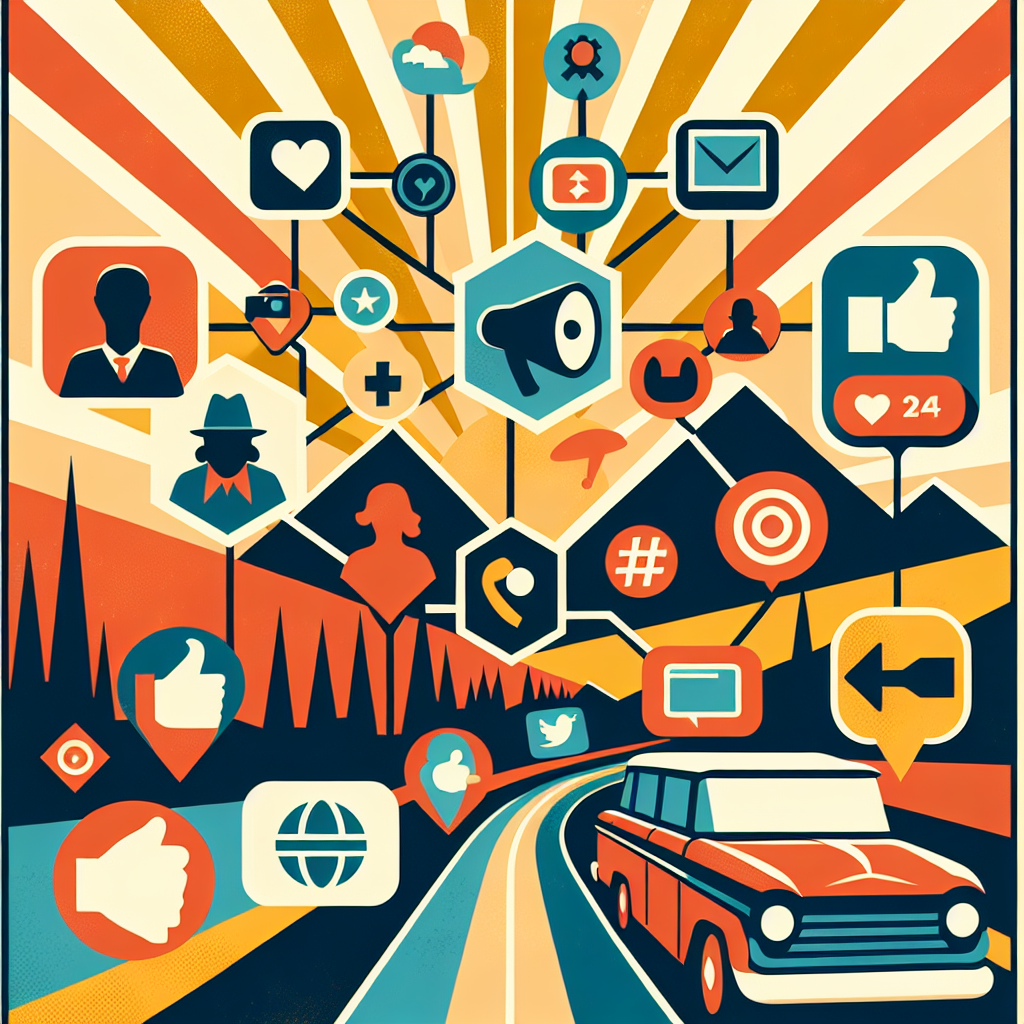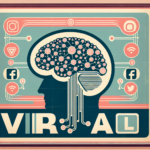An In-Depth Look at User-Generated Content in Marketing
Have you ever wondered about the impact of user-generated content (UGC) on today’s marketing world? Here, we will examine the significant role UGC plays in shaping successful marketing strategies. From trust-building to increased user engagement, the authenticity and sincerity UGC brings to the table can’t be overstated.
Businesses across the globe are using UGC in various forms — from social media posts, customer reviews, and blogs to user-created videos. The advantages are numerous: enhanced trust, improved SEO, cost-effectiveness, community building, and increased engagement, to name just a few.
But how can you encourage your consumers to produce more UGC? What are some real-world examples of successful UGC campaigns? How can UGC influence purchase decisions and product innovations? We have answers to all these questions and more in this enlightening post. So, if you’ve been contemplating incorporating UGC into your marketing strategy, buckle up and join us on this path of discovery.
The Role of User-Generated Content in Marketing
Why User-Generated Content Matters
User-generated content (UGC) plays an essential role in modern marketing strategies. It offers genuine and authentic engagement from consumers. Brands benefit from this content as it’s trusted more by other consumers.
According to a study, people trust content from other consumers seven times more than they trust traditional ads. Utilizing this trust can lead to significant benefits for businesses.
Types of User-Generated Content
User-generated content can come in various forms. Here are some popular types:
- Social Media Posts: Posts, images, and videos shared by users on platforms like Instagram, Twitter, and Facebook.
- Product Reviews: Feedback provided by customers on e-commerce sites and business websites.
- Blog Posts: Blogs and articles written by customers about their experiences with a brand or product.
- Video Content: User-created videos showcasing product use or experiences, commonly found on YouTube or TikTok.
Benefits of User-Generated Content
Implementing UGC in marketing can lead to various benefits:
- Enhanced Trust: UGC builds trust among potential customers who see real users sharing experiences.
- Increased Engagement: Content created by users tends to generate more engagement such as likes and comments.
- Cost-Effective: UGC reduces the cost since content is created by users rather than the marketing team.
- Improved SEO: Regular UGC updates provide fresh content for search engines, boosting SEO efforts.
- Community Building: Encourages a community feeling among users who interact around the shared content.
Strategies to Encourage User-Generated Content
To harness the power of user-generated content, consider these strategies:
- Hashtag Campaigns: Create memorable hashtags to encourage users to share content related to your brand.
- Contests and Challenges: Run promotional events that encourage users to create content with a chance to win prizes.
- Feature User Content: Showcase the best UGC on your platforms, giving credit to the creators.
- Provide Incentives: Offer discounts or special offers to users who contribute content.
Real-World Examples of Successful UGC
Many brands have effectively utilized UGC in their marketing efforts. Here’s a quick look at how they did it:
| Brand | Strategy | Impact |
|---|---|---|
| GoPro | Encouraged customers to share their adventure videos using GoPro cameras. | High engagement with millions of video shares and views, enhancing brand recognition. |
| Starbucks | Launched the “White Cup Contest,” inviting customers to draw on cups and share the designs. | Thousands of creative submissions and increased social media interaction. |
| Coca-Cola | Ran the “Share a Coke” campaign, asking people to share pictures with personalized Coke bottles. | Increased product sales and a surge in social media mentions. |
For more detailed insights into UGC and its impact on marketing strategies, check out this article from the HubSpot Blog.
Enhancing the Customer Experience Through User-Generated Content
UGC: A Valuable Customer-Engagement Tool
Aside from its critical role in trust-building and increasing user engagement, UGC can foster a richer and more interactive customer experience. By including user content in your branding strategy, you recognize the worth of your consumers’ opinions, signaling that your brand values align with theirs. This shared value system can inspire loyalty and contribute to customer retention.
Deepening Brand Identity with UGC
Brand identity is not just about what a company wants to portray to its audience, but more importantly, it’s about how the public perceives it. UGC can add depth and authenticity to a brand’s identity. Content related to the brand created by users can reflect true emotions, preferences, and experiences that resonate deeply with prospective customers, providing real-life glimpses into the benefits and usability of products beyond company-crafted descriptions and messages.
Maintaining Relevancy in Changing Market Trends
Keeping up with changing market trends is challenging yet essential, and UGC can be instrumental in this dynamic. Users’ content provides insights into what’s resonating with the market currently, helping businesses adjust their marketing strategies accordingly and maintain relevancy.
Transforming Users into Brand Advocates
The value of UGC does not end at the external impact it makes; it goes beyond to cultivate brand advocates. By promoting customers’ content, businesses make them feel important and valued, which can drive them to maintain a long-term association with the brand and become vocal supporters.
Answering Market Demand with UGC
Today’s conscious customers show a preference for diversity and inclusivity, and UGC can help deliver that effectively. For instance, the fashion industry now encourages their customers to share pictures of themselves on social media. This UGC helps to portray a broader range of body types, age groups, and people from different ethnic backgrounds, making the brand appealing to a diverse and inclusive audience. This illustrates how listening to market demand and implementing a UGC strategy can create a win-win situation for both businesses and customers.
Fighting Ad Fatigue with UGC
With an abundance of advertisements competing for consumer attention, ad fatigue is real. This condition arises when viewers get bored with repetitive advertisements, leading to diminished campaign effectiveness. Unique, diverse, and authentic UGC can refresh your content mix and help combat ad fatigue.
Expanding UGC Strategies
While the strategies cited earlier have worked effectively for many, there are other methods worth exploring:
- Co-Creation Content: Collaborate with your audience to develop new products, services, or content. This boosts customer engagement and makes them feel part of your brand.
- UGC Fueled Email Marketing: Incorporate UGC in your promotional emails to showcase real-life user experiences, which could improve email click-through and conversion rates.
A more thorough exploration of user-generated content can be found in [this insightful article](https://blog.hootsuite.com/user-generated-content/) by Hootsuite, providing practical tips and additional benefits of integrating UGC into your marketing strategy.
The Impact of User-Generated Content in Marketing
UGC’s Influence on Purchase Decisions
User-generated content (UGC) significantly influences consumer purchase decisions. When potential buyers see authentic experiences from existing customers, it can sway their decisions towards making a purchase. UGC serves as social proof that validates a product’s value and effectiveness, encouraging prospects to trust the brand and consider their offerings.
Encouraging Product Innovation
UGC provides valuable insights into consumer preferences and product performance. Brands can analyze user feedback and shared experiences to drive innovation and make improvements. This iterative approach enables companies to refine their offerings, ultimately boosting customer satisfaction and staying competitive in the market.
Boosting Organic Reach and Brand Visibility
UGC can amplify a brand’s reach organically. When users share content featuring a brand, it exposes the brand to the user’s network, extending its visibility beyond traditional marketing channels. This organic promotion helps brands tap into new audiences without significant financial investment.
Leveraging UGC Across Marketing Channels
Integrating UGC across various marketing channels can enhance campaign effectiveness. For example, brands can incorporate user-generated images in social media ads, feature customer testimonials on their websites, or use video content in email campaigns to create cohesive and multifaceted marketing strategies.
Building Emotional Connections with Consumers
UGC fosters emotional connections by highlighting genuine user experiences. This authentic storytelling appeals to consumers’ emotions and helps build long-lasting brand relationships. People are more likely to connect with brands that resonate with their values and experiences, ultimately driving loyalty and retention.
Addressing Consumer Skepticism
In today’s digital age, consumers often view branded content with skepticism. UGC offers a solution by providing unbiased insights from real users. This transparency builds credibility and reduces skepticism, making consumers more receptive to brand messaging.
Leveraging Social Proof for New Product Launches
When launching new products, UGC can be an effective tool to generate buzz and build credibility. By encouraging early adopters to share their experiences, brands create anticipation and provide social proof to prospective customers, reducing the perceived risk associated with trying new products.
For more innovative uses of user-generated content in marketing, explore this comprehensive guide on Hootsuite’s blog.
The Importance of User-Generated Content in Instagram Marketing
Utilizing Instagram’s Visual Appeal
Instagram thrives on visuals, making it a prime platform for user-generated content (UGC). UGC on Instagram allows brands to showcase authentic and diverse images fully sourced from their customer base, enhancing relatability and engagement. Consumers sharing photos with a brand’s products not only provide authentic content but also highlight various real-world uses of the products.
Building Trust and Credibility
UGC significantly bolsters trust, as users are more likely to trust peer recommendations over brand messages. A survey by Stackla shows that 79% of people say UGC greatly impacts their purchasing decisions. By sharing user-generated posts, brands leverage this trust, increasing credibility and demonstrating genuine customer satisfaction.
Utilizing Instagram Stories and IGTV
Instagram’s dynamic features like Stories and IGTV offer innovative ways to incorporate UGC. Brands can encourage users to share short videos or photos in Stories, aligning with popular consumption trends of ephemeral content. These features can humanize a brand and foster a personal connection by showcasing genuine consumer experiences.
Creating a Sense of Community
User-generated content fosters a strong sense of community on Instagram. When brands promote UGC, it signals to users that their voices are valuable. This mutual acknowledgment enhances the brand-user relationship, encouraging more followers to join the conversation and engage with the brand’s content.
Maximizing Engagement Through Hashtags
Utilizing hashtags effectively can amplify the impact of UGC on Instagram. Encouraging users to include a branded hashtag in their posts helps create a cohesive gallery of user experiences. Engagement can be tracked more efficiently, and it encourages a flow of continuous content as users join the bandwagon.
Enhancing Campaign Reach and Engagement
User excitement about appearing on a brand’s official Instagram page motivates them to participate actively. Featuring UGC keeps the brand’s content fresh, relevant, and engaging while simultaneously increasing organic reach. By highlighting user stories, brands not only engage with their audience but also expand their community organically.
For a deeper understanding of strategies for Instagram marketing using UGC, take a look at advice from sources like the Social Media Examiner.
Concluding Thoughts
In conclusion, user-generated content (UGC) significantly contributes to the effectiveness of modern-day marketing strategies. It serves as a powerful tool in building trust among consumers and enhancing engagement with the brand. Coupled with the diversity of UGC forms – including social media posts, product reviews, blog posts, and videos – there’s a vast range of possibilities for brands to maximize this potential.
Beyond fostering trust and engagement, UGC can be cost-effective, improve SEO, and assist in community building. Factoring in strategies to encourage UGC such as memorable hashtags campaigns, contests, user content features, and incentives can be invaluable in shaping a brand’s image and success.
Furthermore, several successful case studies highlight the power of UGC in action, contributing positively to brand recognition, social media interaction, and product sales among others. Therefore, integrating UGC in marketing is becoming an increasingly important aspect for a brand’s success.
Frequently Asked Questions – FAQs
What is User-Generated Content (UGC)?
User-Generated Content (UGC) refers to any form of content – such as images, videos, text, and reviews – that is created by users of an online platform, particularly social media, rather than by brands or advertisers. UGC is inherently authentic and can be hugely influential in shaping customer’s purchase decisions.
Why is UGC important in marketing strategies?
UGC is essential in marketing strategies because it boosts credibility, enhances engagement, and provides fresh content for SEO purposes. It’s more trusted by consumers compared to traditional advertising, thereby making it a powerful tool in driving consumer behavior.
How can brands encourage UGC?
Brands can encourage UGC by creating memorable hashtag campaigns, running contests or challenges, featuring user-generated content on their platforms, and providing incentives such as discounts or special offers to users who contribute content.
What impact does UGC have on brand perception?
UGC can significantly influence brand perception. Seeing authentic user experiences fosters trust, creates a community feel and signifies a brand that values its customers. It can also offer insights into product usability beyond company-crafted descriptions, thereby creating a more holistic brand image.
What are some successful examples of brands using UGC?
Leading brands like GoPro, Starbucks, and Coca-Cola have successfully used UGC in their marketing strategies. GoPro encourages customers to share their adventure videos, Starbucks launched the ‘White Cup Contest’ for design submissions, and Coca-Cola ran the ‘Share a Coke’ campaign to increase social media mentions.






